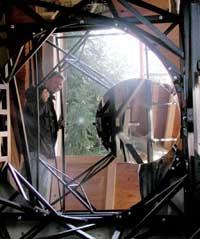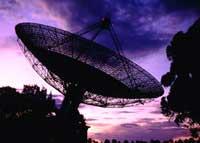ET, are you there?
The newest project is a special telescope looking for laser light. He began his career on April 11 and is already working on the exploration of the sky in search of artificial laser light.

So far ears have been used mostly in search of extraterrestrial living beings. That is, they have searched for radio waves because aliens communicate with them — or anyone knows, maybe because they want to contact us. This issue began in 1960: Radio astronomer Frank Drake began to look for intelligent lives off Earth. Since then, much progress has been made in technology, from telescopes to computer media.
Nowadays, telescopes are mainly used to detect radio waves: some aimed at places where living beings can exist, others to explore the whole sky, working at a certain frequency or using several frequencies.
Along this path have gone the projects BETA, SERENDIP and SETI@home. So far these searches have not yielded results. According to those who work on it, receiving nothing means that there is nothing. And now, without neglecting these projects, they have launched the optical SETI. This telescope will also look for the imprint of other civilizations in our own solar system, the Milky Way. But there is a difference, which instead of being an expert, will look and look rigorously.

This new telescope, located at Harvard's Oak Ridge Observatory, is capable of detecting very short high-frequency light rays. It has specially prepared detectors, video camera, software, etc. He thinks that 3.5 terabit per second is capable of processing information.
If they get money, they plan to make a new telescope, the first with $350,000. Thus, they can compare the data obtained from both telescopes.
Attention please
However, it does not seem easy to grasp the light of these civilizations. Unlike radio waves, laser light is unidirectional and only if these extraterrestrial civilizations want to contact us, the light they direct towards us.

The SETI telescope will receive the message. And not only that, but also where they have issued.
On the other hand, it is true that through light a lot of information can be transmitted, so alien friends can use light to communicate. In this sense, the project promoters are very optimistic, convinced that they are there and that one day we will contact them. When? That's another thing, of course. And until it occurs, at least if it occurs, doubt will prevail.
Published in 7K.
Buletina
Bidali zure helbide elektronikoa eta jaso asteroko buletina zure sarrera-ontzian











